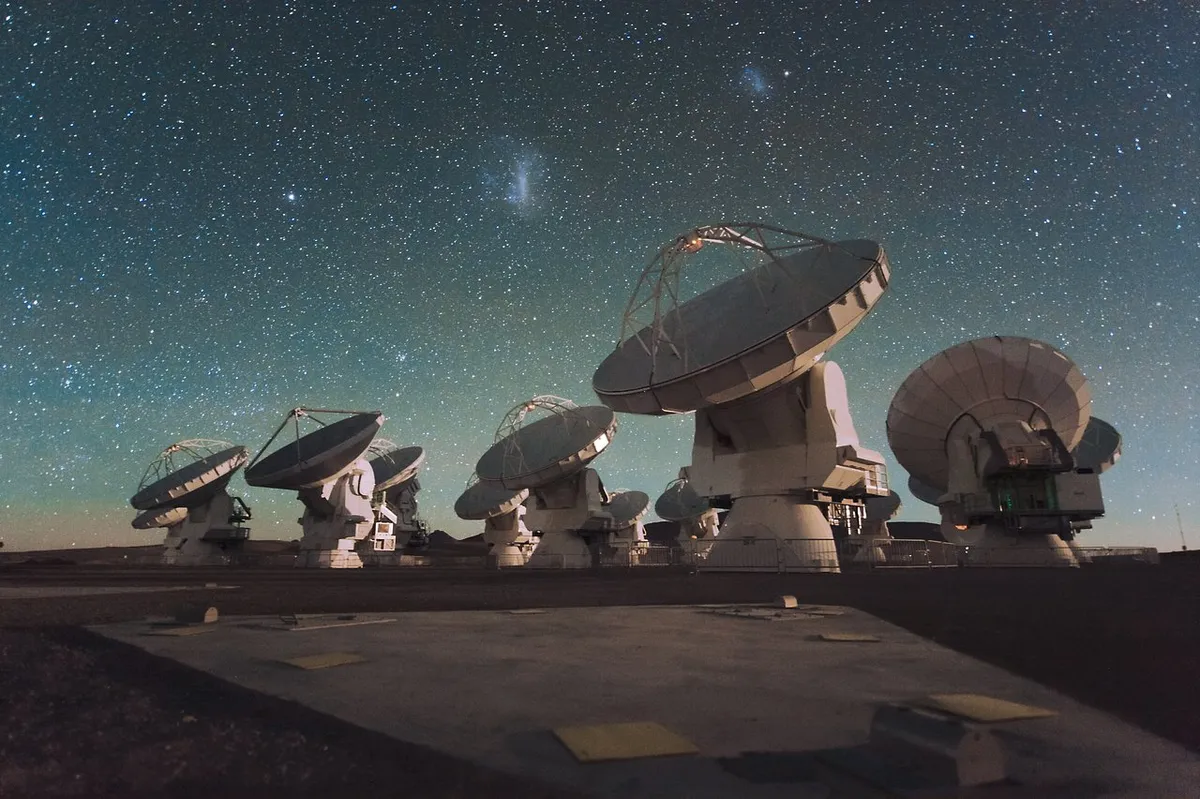Black holes are supposed to be simple creatures. Though the detailed physics of what happens at their centres may never be understood, from the outside, beyond the event horizon they’re just a sink, the Universe’s perfect plugholes.
Yet things are never quite that easy. Material doesn’t just fall into black holes directly, it builds up in accretion disks, heated by friction to enormous temperatures.
If the black hole is spinning, it twists space along with it, dragging powerful magnetic fields around and twisting them up.
This can send jets of material shooting out at high speed, away from the black hole – and a paper from Curtin University in Perth, Australia suggests the behaviour of such jets may be more complicated than previously thought.
In particular, it’s becoming clear that such jets can have remarkably varied behaviour, sometimes changing from hour to hour or even minute to minute.
Studying a system called V404 Cygni – a giant star in orbit around a black hole which weighs in at nine solar masses – a team of astronomers led by James Miller-Jones of the International Centre for Radio Astronomy Research at Curtin University report behaviour never before seen.
V404 Cygni is a microquasar, a smaller version of the bright accretion disks we see around the supermassive black holes at the centre of galaxies.
It has a history of sudden outbursts, having first been catalogued as a nova when it brightened in 1938, it most recently flared during 2015.
This was the first outburst since the 1980s, and the world’s telescopes were on the case.
Even while observations were going on it was clear unusual things were taking place – though previous outbursts caused flickering seen in X-ray telescopes, this time activity was recorded in the optical too.
ALMA observes in what astronomers call the ‘sub-mm’, short wavelength radio with frequencies similar to those used in microwave ovens.
At these wavelengths, the combined resolving power of the scope’s many dishes allows the structure of the jets to be seen.

For each observation the jets change, especially during an intense outburst on 22 June 2015.
During this phase, blobs of material could be seen travelling along the jet, racing along at a third of the speed of light.
These cosmic bullets are being expelled, the authors argue, from the very inner regions of the accretion disk, making a last-minute escape from whatever fate awaits material that crosses the black hole’s event horizon.
So what’s going on? One possibility is that the black hole is wobbling on its axis as it spins, otherwise known as a rapid precession.
It also seems likely that the material flowing from the large companion star onto the accretion disk is arriving out of alignment with the spin of the black hole.
The physics of such a misaligned system allows for material to more easily be expelled, even while the black hole itself grows at a prodigious rate.
Most importantly, though, studying this local black hole do its thing warns us to be cautious when interpreting observations of more distant, and more massive systems; even these apparently simple objects can make things very complicated indeed.
Chris Lintott was reading… A rapidly-changing jet orientation in the stellar-mass black hole V404 Cygni by James C A Miller-Jones et al. Read it online here.
This article originally appeared in the August 2019 issue of BBC Sky at Night Magazine.
